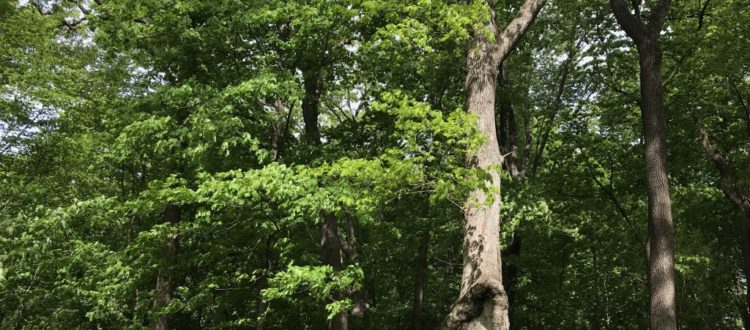Ecological Significance
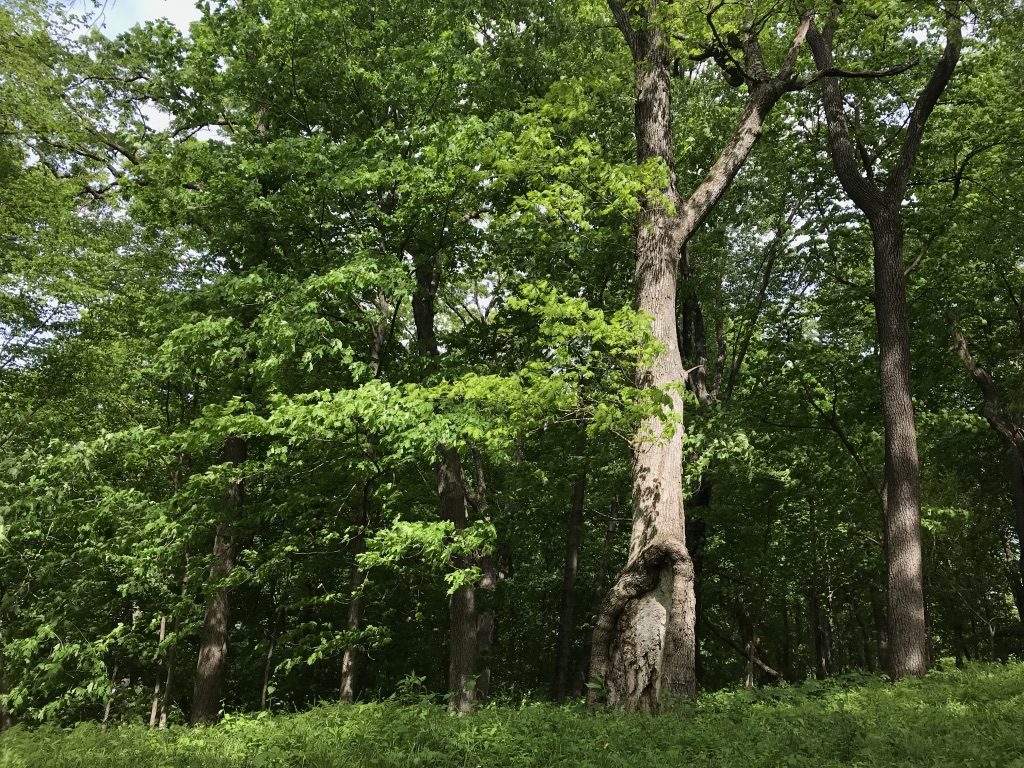
At Four Mounds, just north of Dubuque along the Mississippi River, a mature white oak has been witness to dramatic landscape changes. The 60-acre site pivoted from the Indigenous ecological stewardship to cultural and historic site tourism management.
When a tornado or flood quickly tears through an Iowa woodland, what remains is almost unrecognizable from what was there just moments before. Grazing and periodic, low-intensity fires shaped Iowa’s ecosystems for millennia. Natural disturbances like these create substantial ecological impacts. A lack of disturbance on landscapes that evolved with disturbances is also influential.
Whereas Indigenous Americans set fire to prairie and oak savanna to promote grazing among other land management objectives, new European arrivals averted such blazes. The land endured sweeping ecological changes, from tillage to tiling. Natural spaces that were once sculpted by fire, like the Four Mounds’ oak savannas, mostly faded from the landscape.
Conservation Expansion
Over the course of the 20th century and without prescribed management disturbances, Four Mounds developed into a wealthy gentleman’s farm. Without specific and realistic land conservation management goals, this significant historic site became densely packed with fast-growing maple and basswood trees. The trees’ broad leaves cast a dense shade where far fewer wildflowers bloom and fallen acorns cease to germinate.
Perched above the Mississippi river on limestone bluffs lies the Four Mounds’ remnant goat prairie and oak woodland. Jay Potter, the Four Mounds Conservation Manager, grew up exploring the charming natural setting. Based on his experiences, Jay realized the site had changed significantly. Invasive shrubs and vines had crept in, making the site nearly impassable. The purview of his restoration work expanded past the historic and cultural grounds to include land conservation management.
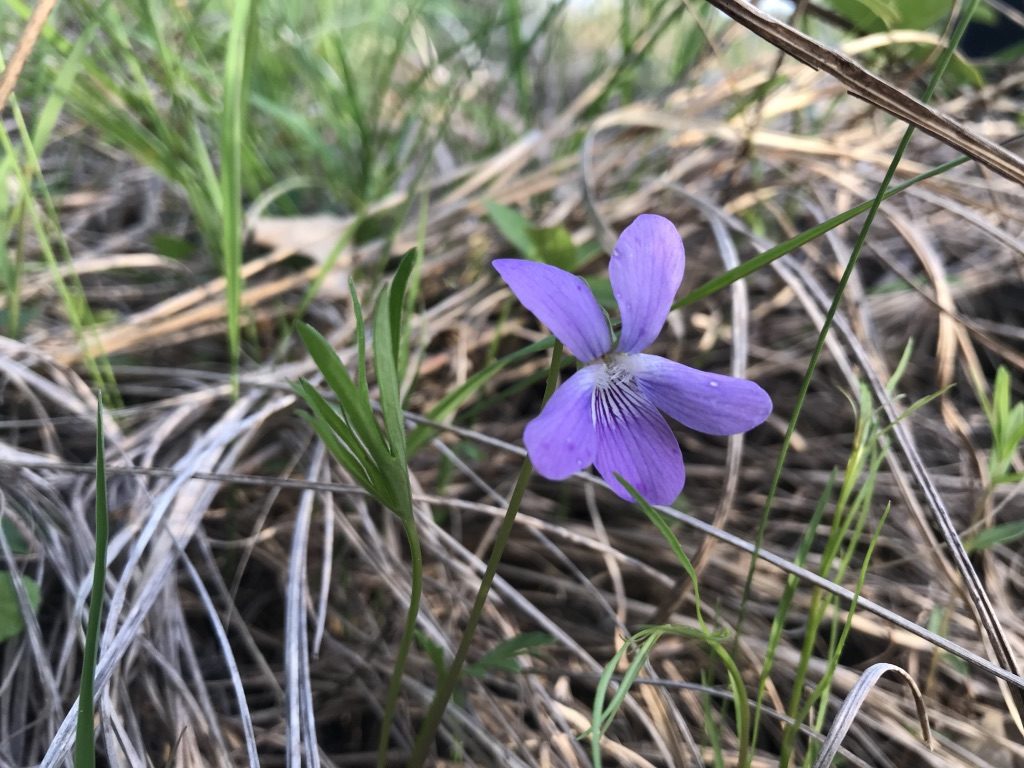
Thankfully, within those dense stands of maple and basswood trees stood 150-year-old oaks. Beneath the invasive honeysuckle, oriental bittersweet and autumn olive, native plants like prairie violet and prairie dropseed remained. A group of restoration collaborators even stumbled upon a spectacular cluster of prairie shooting star. Jay Potter and Chris Olson, the Four Mounds Foundation’s then-Executive Director, had the genetic tools on site to bring back the spectacular native flora.
As Jay explains, “We need a really good management plan in order to be competitive. I had a lot of these ideas in my head but didn’t have a written guide for the whole organization to follow and understand.”
Management Plan in Place
Chris and Jay contacted Luke Gran, Prudenterra Forester, about writing that forest management plan. Over breakfast on the 4th of July, they looked at aerial photos and filled out worksheets to determine their management goals.
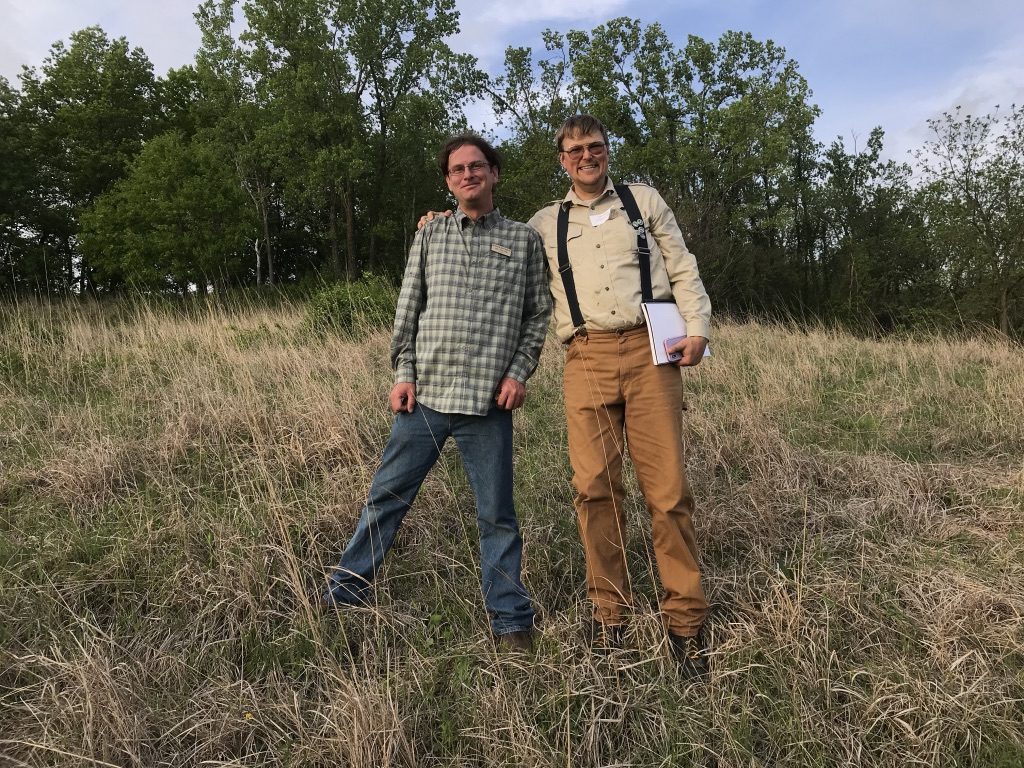
Chris remembers it as a revelation. “To have someone ask us our values and listen to us rather than tell us what we need- that was a really helpful exercise.”
That fall and winter, Luke compiled the full forest management plan. With a 20-year management timeline, the plan includes detailed maps that delineated 24 unique parcels categorized by vegetation type, an expense budget and progress measurements for the upcoming years. The plan intentionally reflects the Four Mounds Foundation’s values, vision and mission.
“Ecological restoration is in line with the Four Mounds Foundation’s mission,” recalled Luke. “They’re all about educating the public and preserving the cultural heritage of the site. However, they cannot do this unless they can preserve and maintain the ecological community.”
An in-depth understanding of the land and its priority areas enable Chris and Jay to lookout for the right opportunities. “Not just for our human visitors,” added Chris, “but also birds, insects and plants that are just waiting to come back out.”
Funding the Future
Expert foresters do more than organize management strategies, provide baseline data and divide the land strategically into management zones. They can even help secure grant funding.
Luke was able to collect and analyze enough data to recommend management actions in time for Four Mounds to submit an application for the annual Resource Enhancement and Protection (REAP) City Parks and Open Spaces grant. Chris and Jay hoped they could secure the REAP grant to implement their new vision.
Meanwhile, Jay secured funding from the U.S. Fish & Wildlife Service to begin removing invasive shrubs and expand the savanna and prairie. REAP grant funds are limited and usually competitive. REAP awarded Four Mounds enough funds to operate through about October of 2020.
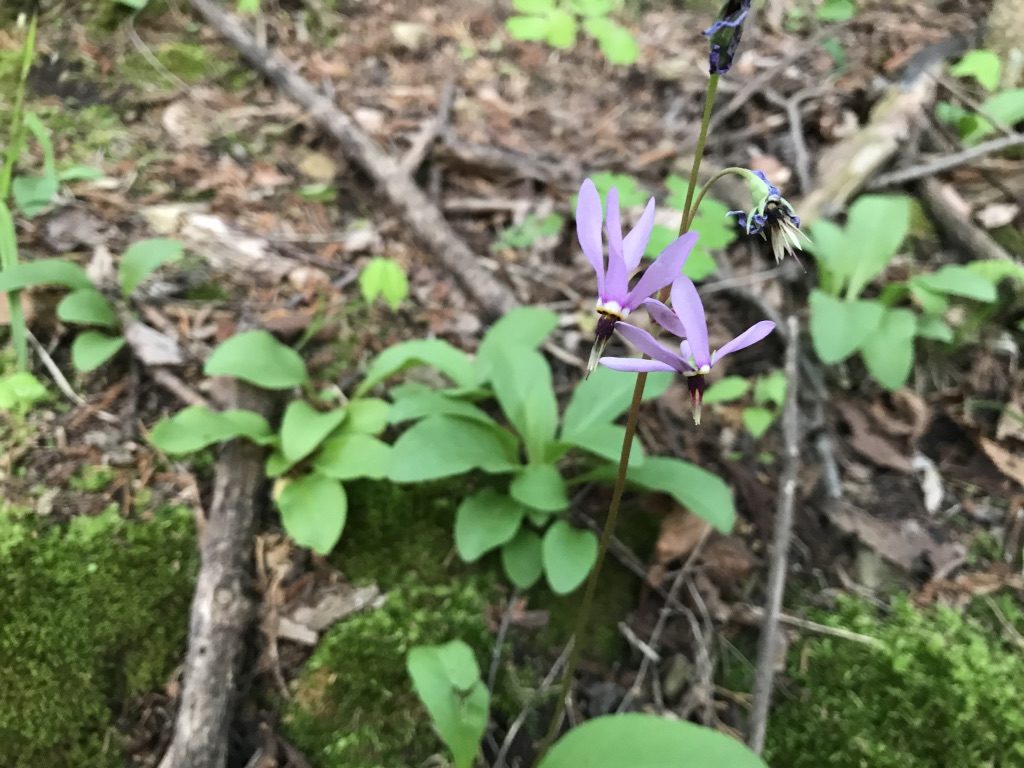
With the forest management plan as their guide, Four Mounds restores itself as time and financial resources are available. This summer, they implemented the first restoration projects with the REAP grant funding. This funding helps remove poletimber-sized trees and invasive shrubs from the remnant goat prairie.
“Now, it’s like the site’s acres are expanded,” said Chris. “I’m able to see how the work we did opened doors to new areas- we could have new trails, views and all sorts of wildlife.”
Learn more about Four Mounds’ cultural and historic significance.
Learn more about forest management with Prudenterra’s Forest Management Guide or the Forest Management Planning resource.

